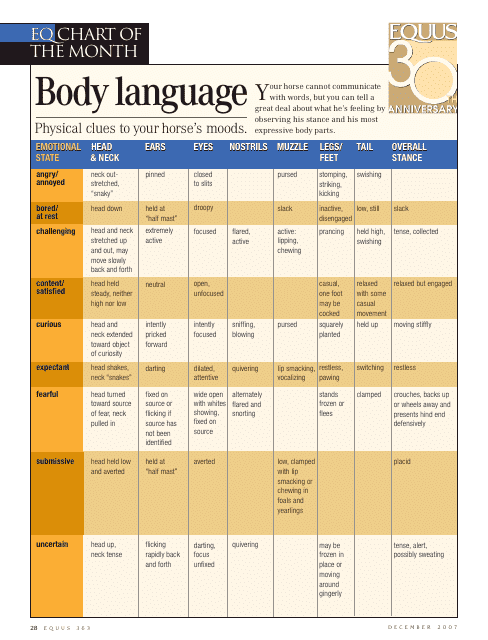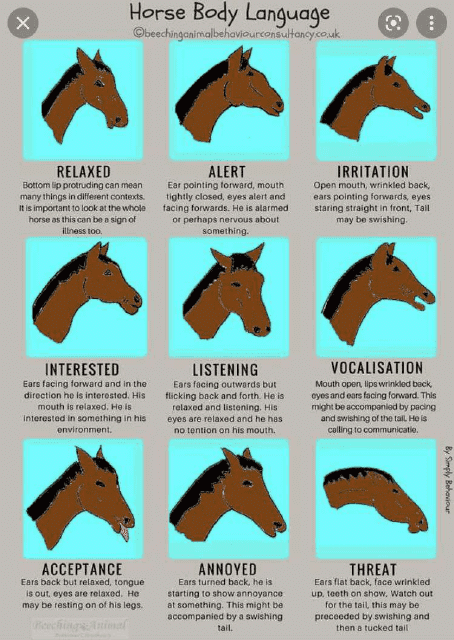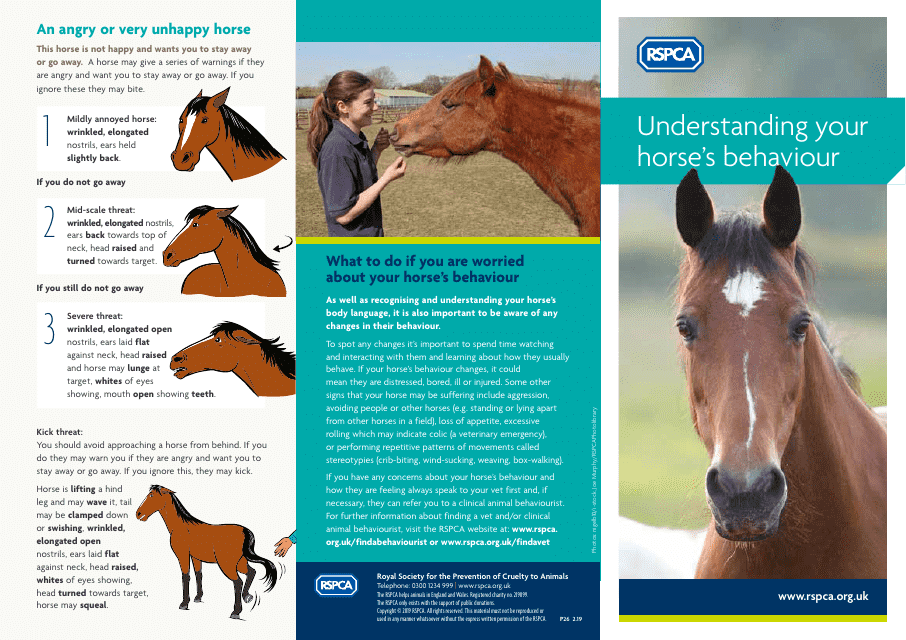Free Horse Body Language Chart Templates
Horse Body Language Chart: What Is It?
A Horse Body Language Chart refers to a visual representation of the nonverbal signals a horse sends through the movements of their body. Whether you are a passionate horse lover or you are working in the equestrian industry, it would be beneficial for you to learn what these animals mean with their gestures, expressions, and posture since they cannot tell you if they are irritated, happy, or experiencing pain. This way, you can be ready to handle an upset or angry animal and keep yourself and other living creatures safe.
For a full list of Horse Body Language Chart templates please check out our library below.
How to Read Horse Body Language?
Recognize horse body language and understand what emotions the animal is feeling at any moment so that you can take measures to make the horse feel content or eliminate the threat to the animal:
-
Relaxed tail, casual posture, open eyes (no whites are visible), and alert ears are the indications of the happy horse body language. The nostrils remain oval and the mouth is closed; moreover, you may even see a smile - the horse's eyes are half-closed and the upper lips are stretched out to resemble a smile humans are used to.
-
On the contrary, stressed horse body language should be taken seriously especially if you or someone else is about to ride the animal or move it to a different location. If the nostrils and eyes are open wide, the stance is stiff, and the tail is up in the air, it indicates the horse is tense and, unfortunately, unpredictable. See whether you can deal with the cause of the discomfort and be gentle when you come into physical contact with the animal.
-
Analyze the ears of the horse - surprisingly, the ears can reveal a lot about the animal's current state. If the ears are moving really fast, the horse may be in the process of searching for the source of sound or smell that bothers or overwhelms it somehow; when the ears are flat against the horse's head, it usually means anger or fear - take care of yourself and stay away at a reasonable distance to avoid being kicked. Horses may also feel uncertain due to sudden discomfort - they show their anxiety by extending their ears; note that if that happens often, it is likely the horse has a health issue you need to take care of.
-
Prepare a Horse Body Language Chart if you want to advise other people on how to treat their animals better. You may create a table separating different body parts of the horse and listing various emotions the horse can feel, just like humans do - boredom, satisfaction, curiosity, or dread. It is also a good idea to use images of the horse's head to examine its behavior through ears, mouth, nose, and eyes - write down your remarks under different illustrations.
Haven't found the template you're looking for? Take a look at the related templates below:
Documents:
3
This chart provides a guide to understanding your horse's body language and determining its mood.
This document explores the signs of different moods displayed by horses using a body language chart. Understand how horses express their emotions through body signals.
This document is a horse body language chart that helps you understand your horse's behavior. It provides visual cues and explanations to help you interpret what your horse is trying to communicate through its body language.



